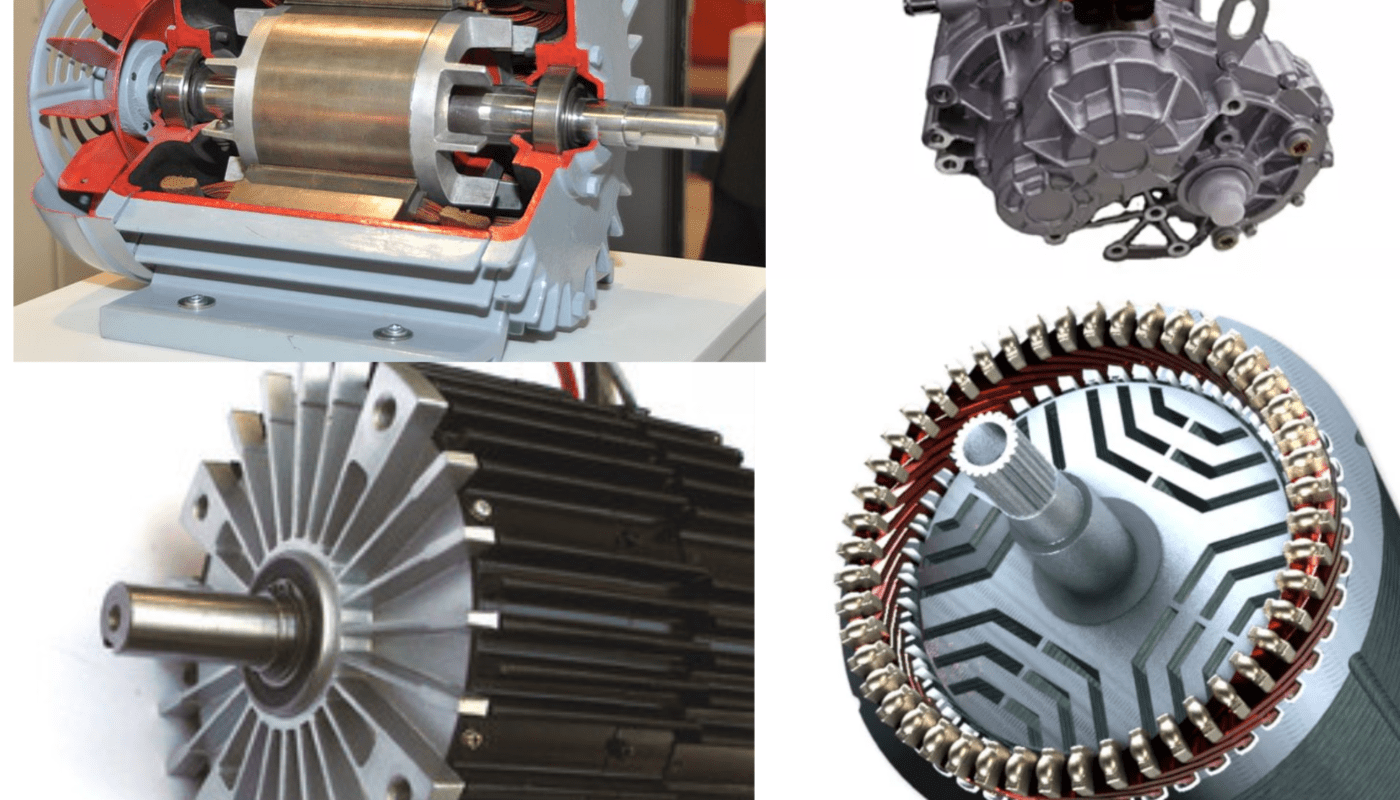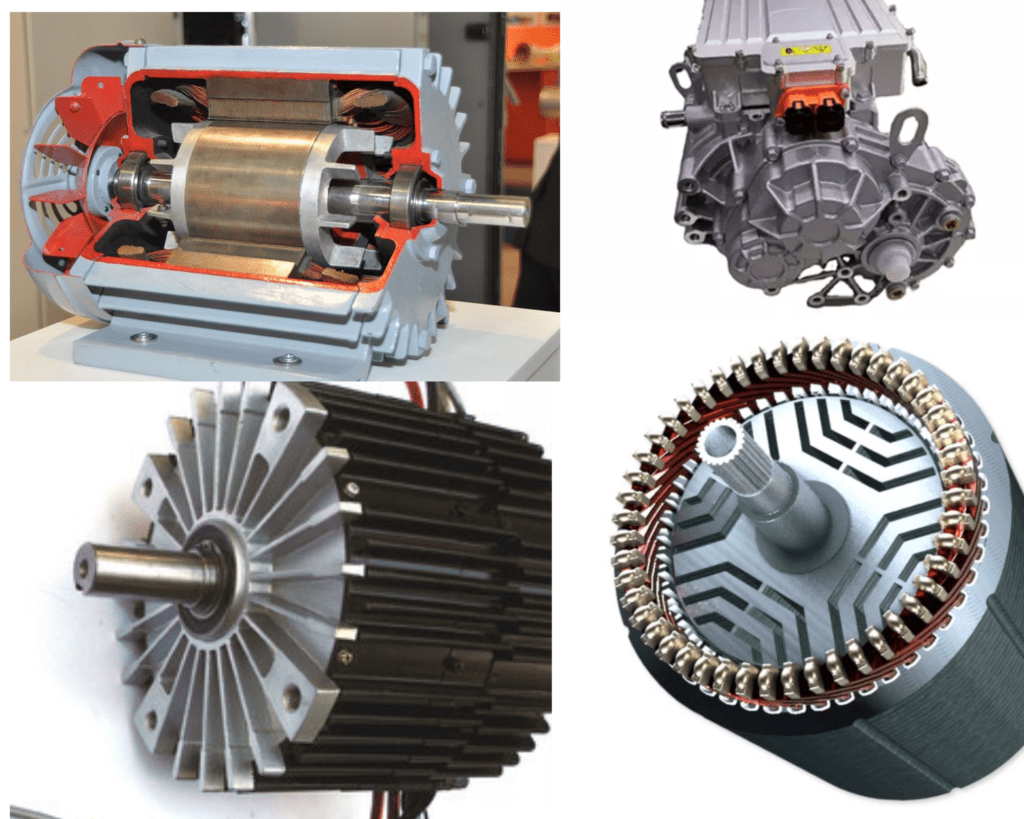
Electric vehicles as the name say use some kind of electric motor. Now, electric vehicle motors are used for various purposes and vehicles are not necessarily the same type. There are various types of electric motors used for various purposes. In this topic, we shall take a look at all the motor types that are primarily used in today’s EV industry.
The main types of electric motors used in EVs are as follows.
PMDC motor | Permanent magnet direct current electric vehicle motor
In this kind of electric vehicle motor, it is generally a single phase meaning only positive and negative terminals are there. This is mostly brushed DC type. It has a magnetic stator meaning it’s made up of permanent magnets. The rotor is generally a multipole brushed armature rotor. The rotor is constructed from stamped iron core and copper windings. This is the simplest form of electric motor used in a wide variety of equipment like toys, drill machines, and powered screwdrivers.
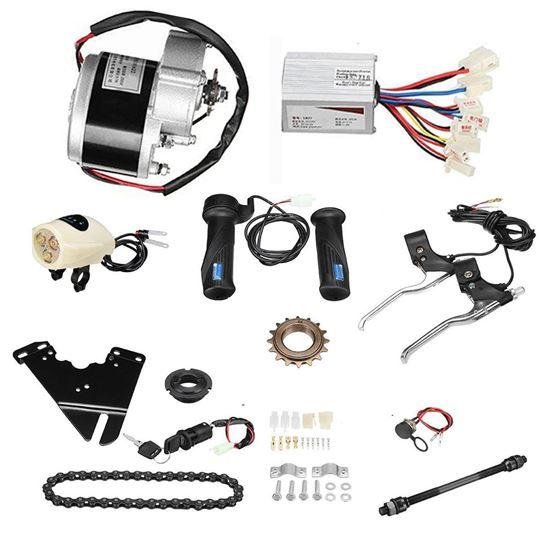
Our focus is on EV usage, this is used in very low-power EVs. Typically in bicycles, low-speed skateboards, and low-end electric mopeds.
The reason for the low usage is that it has a very high probability of failure due to brushes and commutator arrangement. Also, the carbon dust generated from these brushes is conductive and it can always result in short circuit and burnout problems.
All in all PMDC motor is almost obsolete but still today some cheap kits as shown are available online as DIY kits. The advantages are, simple and cheap to manufacture.
The controller is relatively simple. The disadvantage is that it has typically low efficiency due to the brushed structure. Brushes wear out over a period of time resulting in failure.
High temperatures may result in demagnetization of the stator magnets and ultimately the motor losing all the power.
BLDC Motor | Brushless direct current electric vehicle motor
This is the most common type of electric vehicle motor. DC motors are used extensively in the EV industry today. The motor as the name suggests has almost eliminated the shortcomings of the PMDC electric motor discussed above. As there are no brushes and any commutator arrangements in this motor the same is achieved electronically by the microcontroller-based ESC (electronic speed controller) or the controller of an electric vehicle. The BLDC motors are again categorized into two main categories.
- Hall sensor feedback BLDC motor
- Sensorless BLDC motor

In the sensor type of motor, the hall sensors are placed inside of the motor, and rotor position information to the controller is given by the hall sensor, and accordingly, the controller carries out the electronic commutation of reversing the field polarity to keep the rotor moving in the one direction.
Generally, BLDC motors used are having efficiency upward of 90 %. Three-phase BLDC motors are common in use. Now you may get confused that how DC motors may have phases.
The motors are defined by the source of their operation rather than their working. So if the source is DC it’s a DC motor and likewise AC motor if the source is AC. Used in the electric two-wheelers and small cars to moderate SUVs.
The sensorless BLDC motor as the name suggests is having no sensor inside the motor. This motor purely relies upon back EMF for finding out the position of the rotor. I am keeping the details of the article limited because all readers may not be so much into the field and for general interest, I am not going into the depth of working of all motors. Now, these sensorless motors are also three-phase ones. Used in micro and mini drones and video photography drones for commercial uses.
The disadvantage of the BLDC motors is that controller is complex and needs a microcontroller and sophisticated program to run and control. Needs rare earth metals like neodymium which certain countries are having a monopoly resulting in price and supply chain fluctuations and limitations to free and fair usage. On the advantages front, the BLDC motor is a darling of the industry. It has a lot of goods stuffed into it. It provides high starting torque. High RPM, reliable, and highly efficient.
PMSM | Permanent magnet synchronous motor
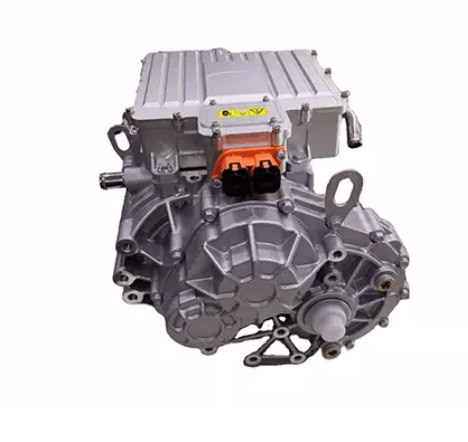
PMSM electric vehicle motor is basically an enhanced version of the BLDC motor only. Then you will ask wats the difference is, well PMSM is generally used for high power high traction workloads.
All automotive manufacturers use PMSM in their hybrid and pure electric vehicles like cars, buses, and trucks.
Also, the other technical difference between the BLDC and PMSM is that PMSM working and feedback is a sinusoidal wave and that of BLDC can be a square wave or trapezoidal.
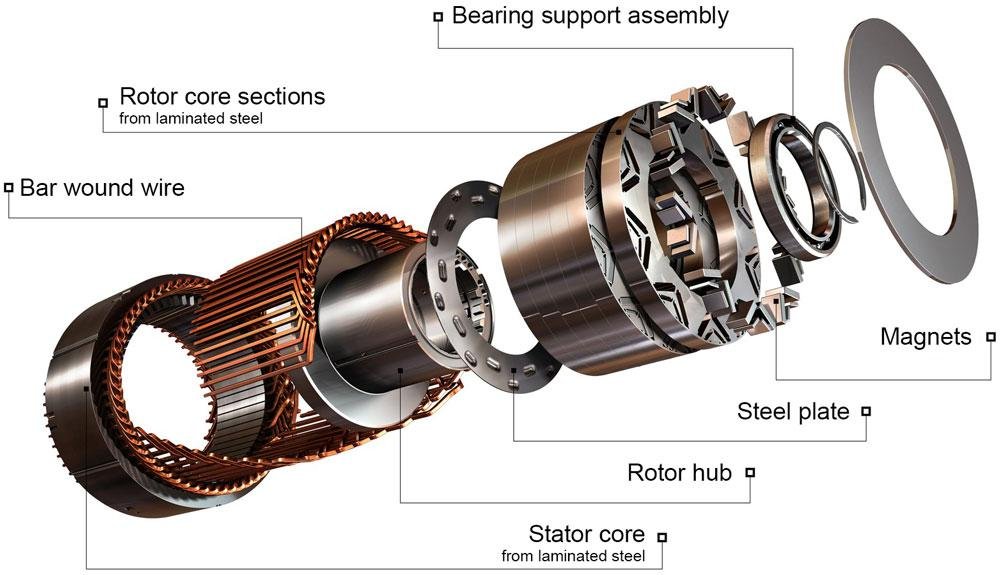
There are obvious advantages of using a sine wave control system rather than a square wave which is out of the scope of this article to keep things simple for a broader spectrum of audience.
The BLDC already has a complex operation and is expensive too. The PMSM is more expensive than that of the BLDC too. (Owing to the usage of rare earth elements in the permanent magnets). Though due to high power density and efficiency the PMSM motors are used by all major automakers over induction motors.
Three-phase induction motor
The induction motor is one of the most reliable and easy to manufacture. Teslas use induction motors and from this, you can get to know how reliable it is. The induction type does not use any rare earth materials like neodymium and strontium or any kind of magnets.
The efficiency of the induction type electric vehicle motor is also very high upward of 90 % can easily be achieved. This is a reliable industrial workhorse. Lathe machines, spinning mills, flour mills, polishing machines, cutting machines, fans, blowers, compressors, air conditioners and so and so forth are used extensively almost everywhere.
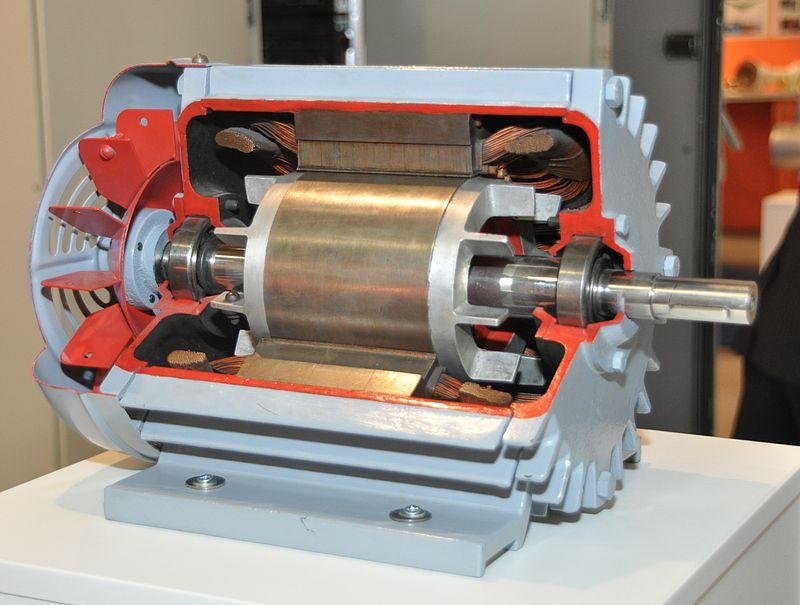
Induction type is due to their high reliability and rugged construction used in electric vehicles. These motors have very high torque and high power and RPM.
Basically, the induction motor in the simplest word is a transformer with its secondary winding short-circuited, this short-circuited secondary which is the rotor of the motor produces the magnetic field which in turn spins the rotor which itself is the secondary of the hypothetical transformer we are talking about here in this article.
The use of an Induction type is as said done by Tesla in its cars. Tesla is one of the most reputed and valuable EV companies on the planet and by saying this I am just trying to make you understand the reliability and robustness of induction motors. There are obvious disadvantages.
One is that it needs a sophisticated and state of art inverter controller. Also, the induction type has a typical characteristic which is slip. If you want to know more about the slip I have linked the detailed article on Wikipedia for you to know what the slip is and is really a very interesting phenomenon that takes place in induction type only.
But as discussed induction motor is one of the prime candidates that is considered very potential in the usage of cars buses and trucks for EV applications.
SRM | Switched reluctance motor
Switch reluctance electric vehicle motor is not so new technology but rather this is decades-old technology. In this, the stator winding is made up of regular copper winding like any other.
Whereas the rotor is made up of soft magnetic material like steel stampings. As the material like iron is attracted to the poles generating a magnetic field, the rotor turns as rotor poles are attracted to the stator poles and thus the motion is achieved.

To keep this motion of the rotor going the next pole pair is switched and so on and so forth so the poles get attracted to the second pair of poles on the stator.
I may be very brief in the explanation but this switched reluctance motor link will help you to understand working in the detail. Electronics are quite capable now and so the SRM is nowadays in limelight.
The advantage is that the said motor is capable of ultra-high speed. it does have decent power and torque figures. Also, no expensive materials are used.
The said motor in the EV industry is supposed to replace PMSM in the future after the technology in switching evolves.
Conclusion
- PM brushed motor:- Uses are limited, less efficient brushed, used in small cycles and toys.
- BLDC motor:- Used widely, high power-to-weight ratio, high efficiency and reliability, small vehicles, and cars.
- PMSM:- Used widely, popular, reliable, efficient, and robust, medium to large cars, buses, and trucks
- Induction:- Very popular, decent power-to-weight ratio, extremely robust, reliable, used in many cars and EVs
- SRM:- It’s a viable alternative to PMSM but still decade-old technology is evolving due to power electronics.

